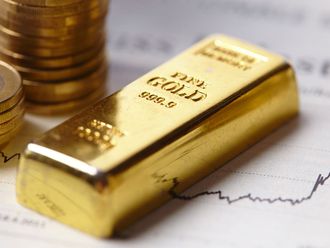Gold continues to exercise the imagination of investors with some even suggesting a return to the gold standard. Mark Harrison, director of publications at CFA Institute explores this idea.
How does a gold standard work?
In the classical gold standard of the late 19th century the domestic money supply is directly tied to each country’s stock of gold. Those countries with a trade deficit, who are sending more currency abroad to buy foreign goods than they are receiving from exports, find that their money supply is automatically contracted. This depresses their domestic price level. With lower prices the deficit-country’s exports quickly become more attractive to foreign countries, whilst imports become more expensive, clearing the deficit.
Under this elegant system, global imbalances are automatically restrained by credit expansion in surplus countries and contractions in deficit countries. Exchange rates are fixed, and any deviation of domestic price levels from the world gold price triggers the alarm of exports or imports of physical gold before things move too far from equilibrium. Deficit countries are prevented from consuming that part of their production which they will need for exports in order to rebalance.
On one intuitive level, the gold standard was considered a discipline to prevent the moral injustice of inflation eating into the savings of the dominant class. It also maximised the international efficiency of production.
How did past gold standards perform?
Gold standards are a recurring theme, yet few of them seem particularly successful. In the last century a procession of gold standards, and gold-exchange standards (a watered down version), failed to survive the challenges of the First World War, inter-war economic turbulence and American overspending in Vietnam. The most recent gold standard established at Bretton Woods in 1944, collapsed in 1971. We’ve learned that standards are hindered by problems such as hoarding, unilateral currency devaluations and countries going in at the wrong rate.
The fiat money system re-introduced after 1971, based on paper notes rather than gold, does have a number of advantages. Economist, Milton Friedman concluded that holding a gold standard together, by endless international conferences, was impossible. Allowing the market to determine the level of currencies liberates policy-makers to focus on national economic objectives, rather than trade deficits, and frees them to intervene at times of distress. Others did not share Friedman’s view of floating exchange rates, fearing the consequence would be volatile capital flows.
Is gold the next international reserve currency?
A return to the gold standard is now being proposed as a cure-all for recent monetary excesses, permitting the dollar to retain its place as the international reserve currency, the trophy transferred from the pound at the Bretton Woods Conference in 1944.
One practical difficulty is that a gold standard may require more gold than currently exists. Other hurdles to a return to the gold standard are the sizeable US trade deficit, the parallel mountain of Chinese surpluses, undervaluation of the dollar-pegged Chinese currency, competitive devaluations amongst currency rivals, and the emergence of regionally significant political blocs. The difficulty faced by issuers of reserve currencies in balancing domestic monetary policy goals with the demand from other countries for reserve currency even has its own name: the Triffin Paradox.
If the US dollar loses confidence as an international reserve currency then another idea is winning supporters: First proposed by economist John Maynard Keynes at Bretton woods, a supracurrency could be created to rebalance international capital flows. But despite Chinese enthusiasm, there isn’t much consensus for such a big shift.
Nonetheless, since 1971, gold has always remained an important part of the reserve portfolios of central banks, which currently own 29,500 metric tons. Around the turn of the century many central banks favoured sovereign debt and sold off gold holdings at low prices. More recently central banks, especially developing countries, have been net buyers of gold.
Is the gold standard debate affecting the gold price?
One argument is that gold is already much the same thing as money, a store of value and medium of exchange, even without a formal gold standard. But the gold-is-money argument suggests prices are constant when they are measured in gold. In one forthcoming study, the authors find that as an inflation hedge, gold is much overrated.
Others have suggested that the price of gold should relate to the total amount of money in circulation divided by the size of the gold stock which generates a shadow gold price of about $10,000 an ounce for the US. But these metrics are captive to history and politics.
Whatever the outcome of the debate there is likely to be enduring interest in the notion of a fixed monetary supply to curb those natural human instincts to spend excessively.
(Mark Harrison is director of publications at CFA Institute)












